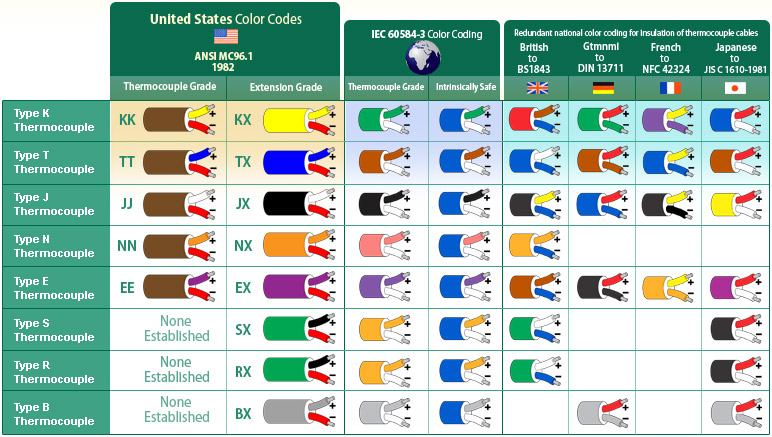Stacy E. Apelt - Bladesmith
ilmarinen - MODERATOR
Moderator
Knifemaker / Craftsman / Service Provider
- Joined
- Aug 20, 2004
- Messages
- 36,603
I had a question about a TC wires and though I would make a separate post on the subject.
In type K TC wires the cover is yellow. Inside are two leads - Red is negative and yellow is positive
Thermocouples are polarized. One lead is made from alumel. It is magnetic and is the negative lead ... which connects to the red wire in type K TCs . The chromel lead is not magnetic and is positive .. thus connecting to the yellow lead.
All other plugs, sockets, and TC blocks are polarized, too. Look for the + and - marks.
This is the color code chart for TC wires:
https://www.thermocoupleinfo.com/thermocouple-color-codes.htm

If in a past post or email I inadvertently typed the TC leads backward, I sincerely apologize. I don't think I did, but if you are using old threads or an email from me for information and having issues, check your polarity.
In type K TC wires the cover is yellow. Inside are two leads - Red is negative and yellow is positive
Thermocouples are polarized. One lead is made from alumel. It is magnetic and is the negative lead ... which connects to the red wire in type K TCs . The chromel lead is not magnetic and is positive .. thus connecting to the yellow lead.
All other plugs, sockets, and TC blocks are polarized, too. Look for the + and - marks.
This is the color code chart for TC wires:
https://www.thermocoupleinfo.com/thermocouple-color-codes.htm

If in a past post or email I inadvertently typed the TC leads backward, I sincerely apologize. I don't think I did, but if you are using old threads or an email from me for information and having issues, check your polarity.

